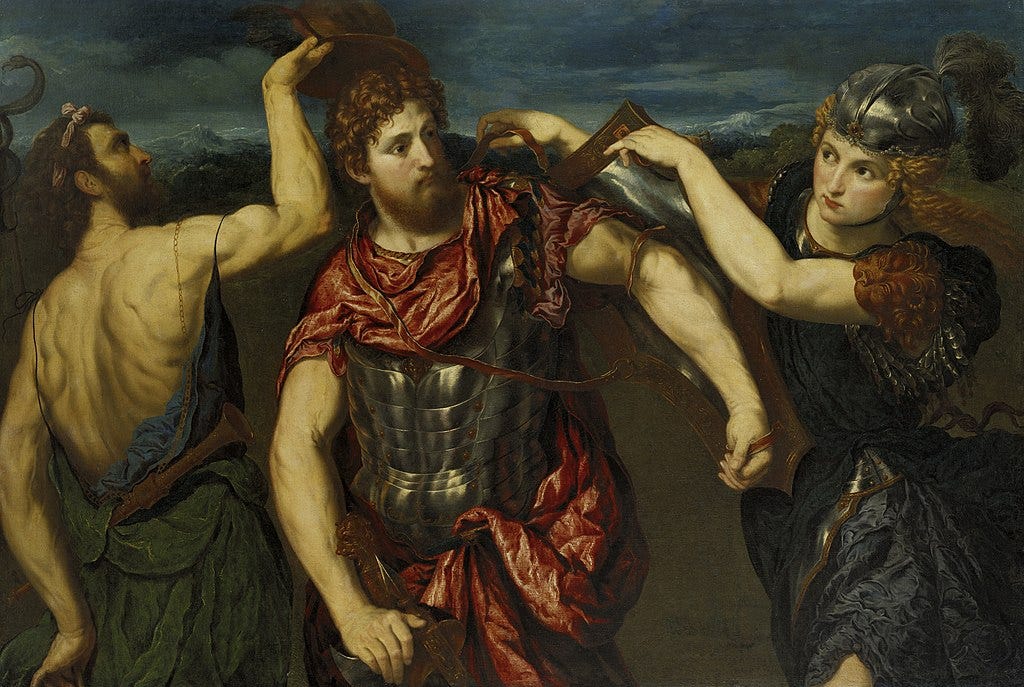After Virtue: The Virtues Defined
“The exercise of the virtues is itself a crucial component of the good life for man” - Alasdair Macintyre, After Virtue
This essay is the third essay in our series on the principles of virtue ethics. During the first essay, we examined the moral paradigm that is most prevalent in our current day, that of emotivism and general moral relativism. The second essay explored the importance of the Telos and the existence of a Tao, or an objective set of moral truths expounded upon by C.S. Lewis in his excellent series of lectures entitled The Abolition of Man. This essay begins with traditional morality and an attempt to define the virtues, for if we do not know to which port we are sailing, then no wind is favorable. The Aristotelian moral paradigm is teleological, based predominately on the idea that all things and living beings have a function or an end goal. A thing is good when it secures or achieves its telos. From a biological perspective, an acorn's purpose, or Telos, is to grow into an oak tree. The processes that lead to the fruition of this Telos are good, and the processes that hinder its development towards this Telos are, for lack of a better term, evil. For Aristotle and Socrates, man's ultimate purpose is to live well and achieve a state of human flourishing. This is accomplished by a rational individual conducting himself according to moral excellence or virtue.
For Aristotle, who set out to define these virtues in the work he titled after his son, virtues are contextual actions in response to either an event or an emotion. These actions exist on a spectrum, and the ultimate goal is not an extremity but a mean. One of Aristotle's contributions to moral philosophy is his conception of the golden mean. Take, for example, the emotion of fear. There exists a virtuous response or disposition of courage, while there also exists an excess such as rashness and a disposition of deficiency in the form of cowardice. The soldier and leader that wantonly and prematurely engages a superior enemy and suffers needless casualties would be guilty of rashness. In contrast, the soldier who flees despite reasonable risk would be guilty of cowardice. In his Nicomachean Ethics, Aristotle defined twelve virtues along with their vices of excess and deficiency.
Virtue Chart
These virtues and their respective vices provide the bedrock for living a moral and just life. They are quintessential aspects of Lewis’s Tao and the moral road map described by Alasdair Macintyre in After Virtue. These virtues make up the virtuous character and the virtuous life, which is the prime teleological aim of Aristotle, Plato, and Socrates. Aristotle and Socrates believed these virtues could be cultivated through propagation and teaching through prior generations, self-discipline, and experience. The task of propagating these virtues as opposed to propagandizing is no easy feat, and living up to these virtues in our lives often seems a Heraclean task. Ultimately, the expression of these virtues is necessary to achieve our telos of human flourishing or eudemonia. The cultivation of a virtuous character happens only by practice and deliberate effort. For Aristotle, Mcintyre, and certainly C.S. Lewis, the inculcation of these virtues ultimately leads us towards a good life. Outside of the pursuit of Virtue, everything else is merely a veneer or pleasant trapping.
For Macintyre and for C.S. Lewis, these are the elements of our individual and cultural characters that are so lacking in our postmodern world. With our grasping at moral relativism and the attempts at creation of a new system of ethics based once on reason and now on feeling, we have abandoned the rich and viable moral heritage that we were once endowed with.
You might be asking yourself. How, then, do we propagate and inculcate these virtues in ourselves and in coming generations? That is the subject for next week’s essay.
“Aristotle says that the aim of education is to make the pupil like and dislike what he ought.” - C.S. Lewis



